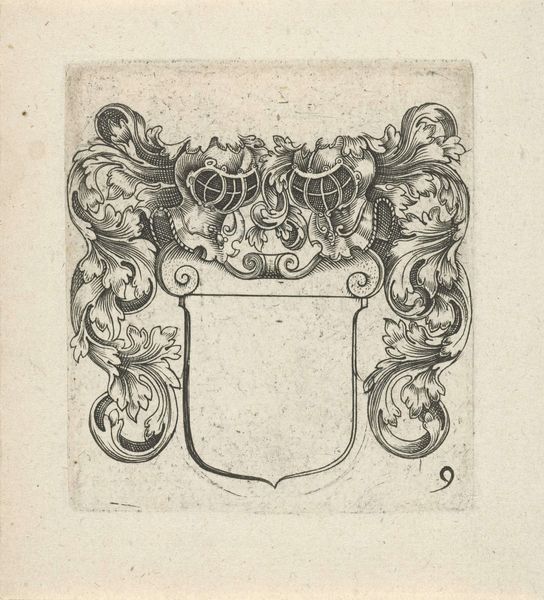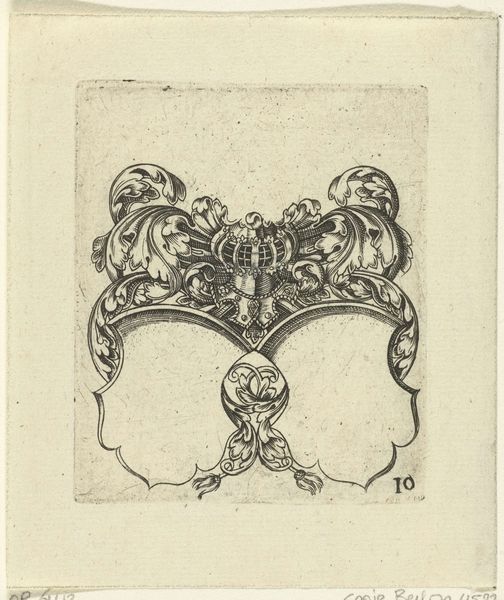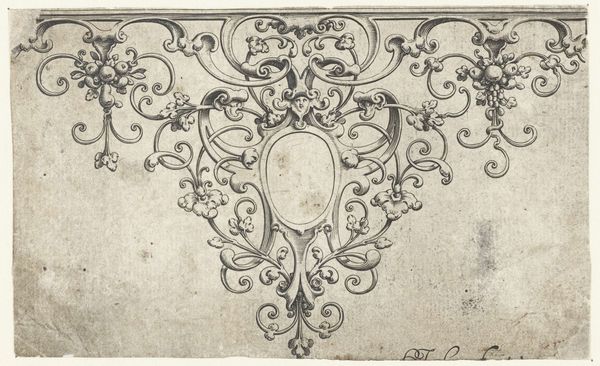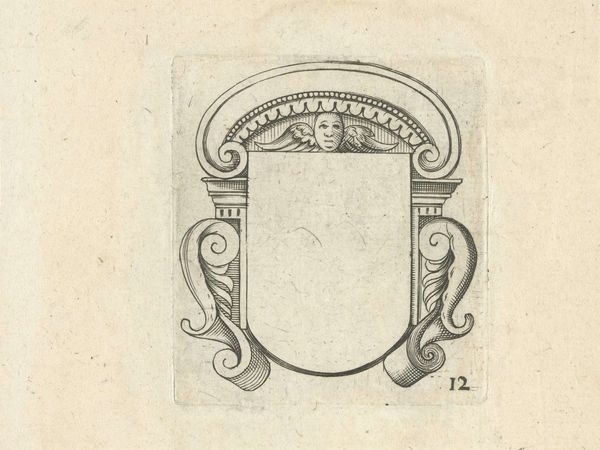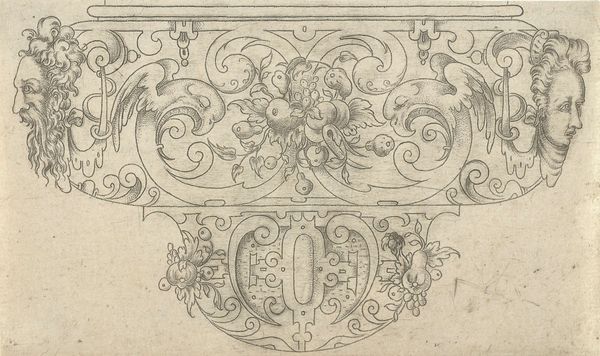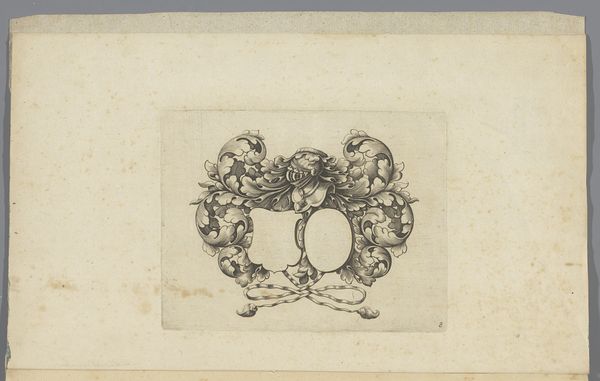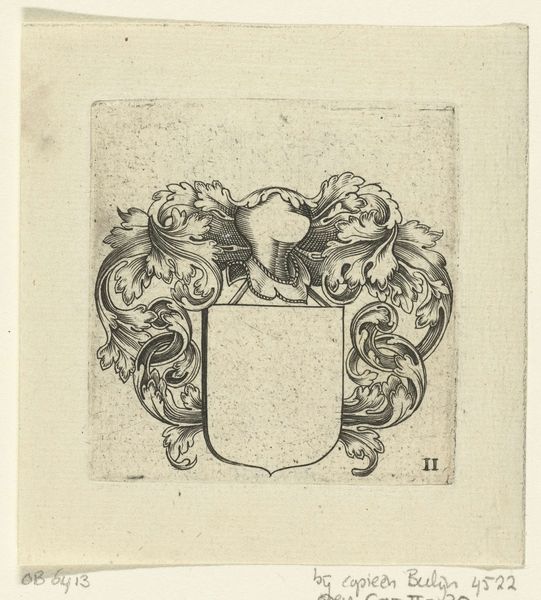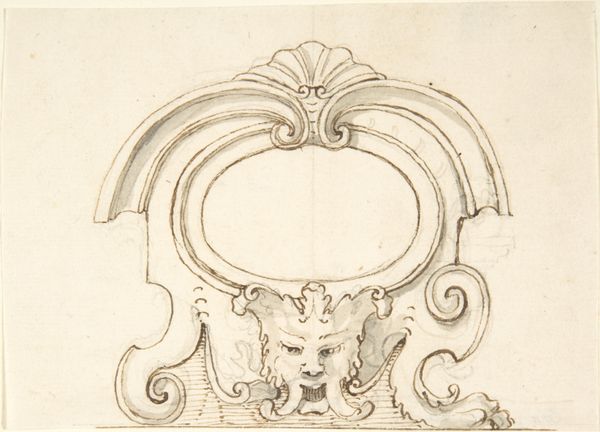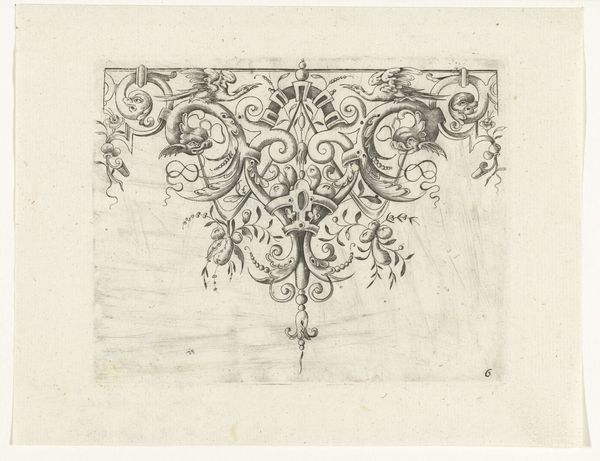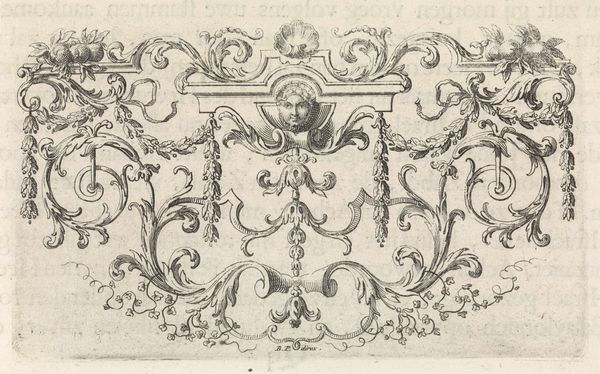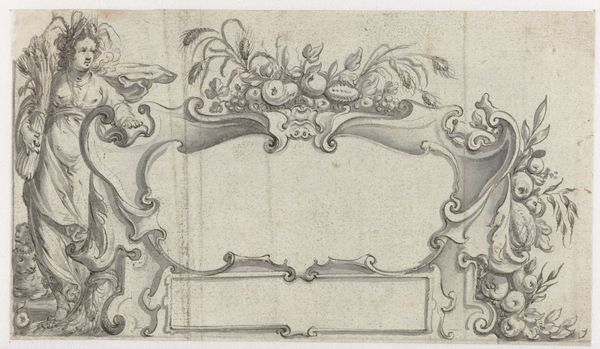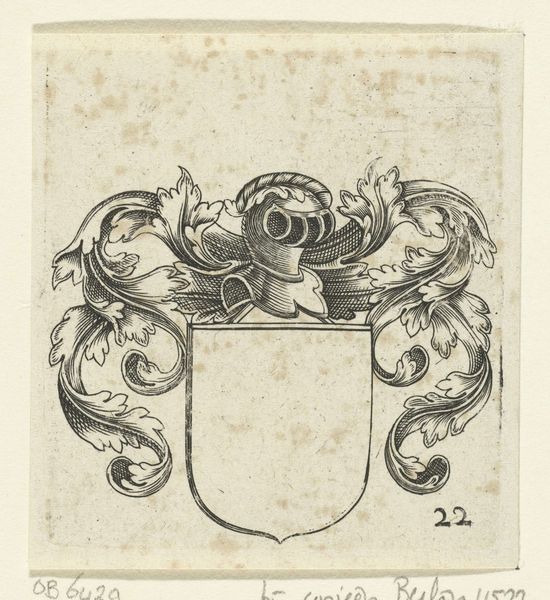
drawing, print, metal, engraving
#
drawing
#
baroque
# print
#
metal
#
pen sketch
#
pencil sketch
#
old engraving style
#
pen-ink sketch
#
line
#
pen work
#
engraving
Dimensions: height 64 mm, width 60 mm
Copyright: Rijks Museum: Open Domain
Editor: This is "Wapenschild met helm en bladranken," or "Coat of Arms with Helmet and Foliage," made around 1625 by an anonymous artist. It's a metal engraving currently housed at the Rijksmuseum. The detail is incredible! What really strikes me is the dynamic interplay between the intricate leafy ornamentation and the stark, empty shield. What do you make of it? Curator: The composition presents a fascinating study in contrasts, doesn't it? Notice how the artist uses line—primarily through the technique of engraving—to create not just form, but also texture. The density of lines around the helmet and foliage creates a sense of volume and almost Baroque exuberance, while the blank shield is visually "quiet" but activates the design overall. How do you think the artist directs our gaze through this piece? Editor: Well, my eye definitely keeps getting drawn back to that helmet and the swirling leaves above the shield. It feels like all the energy is concentrated there, almost overshadowing the central shield, which one would assume to be the focal point. Does that negative space affect the whole dynamic? Curator: Precisely. Consider that emptiness itself as a structural element. It invites the viewer to complete the image, to project their own identity, family, or lineage onto that heraldic form. The work is less about definitive representation and more about potentiality, wouldn't you agree? The lines generate form, and ultimately guide how one sees. Editor: That's such an interesting take! It changes my perspective on the engraving; now I'm looking at it less as a finished emblem, and more as an invitation. I learned something new. Curator: And I find your observation insightful; the dynamic absence as an invitation rather than an omission helps us engage with the form's semiotic power. It is refreshing to observe the interplay between form and context anew.
Comments
No comments
Be the first to comment and join the conversation on the ultimate creative platform.
